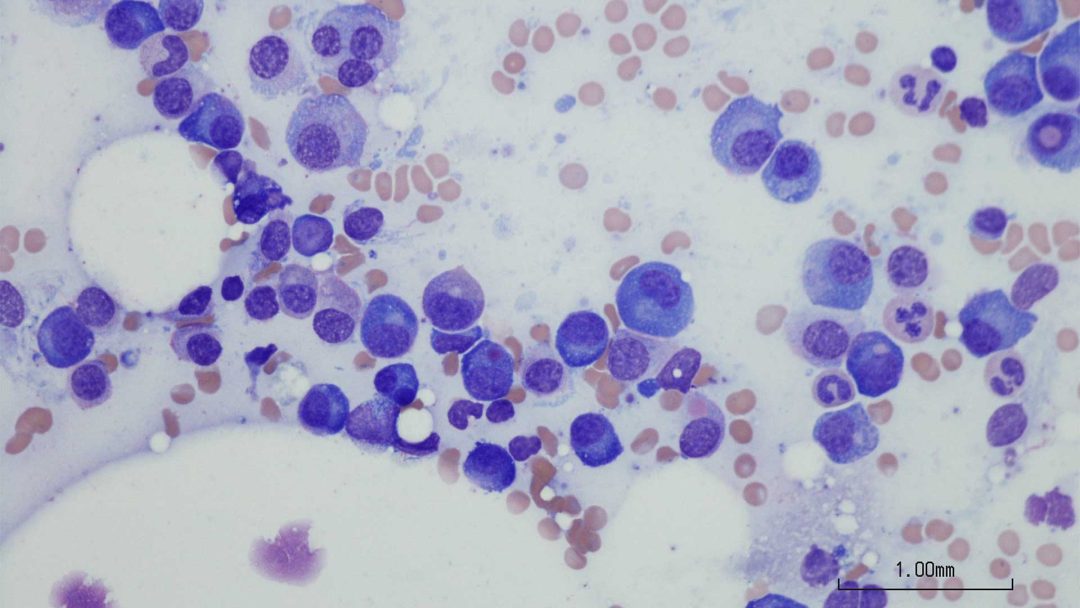Malignant Neoplasm

Malignant neoplasms are a uncontrolled growth of tissue cells (neoplasms) that spread to other tissues and cause harm (malignant). A malignant neoplasm is also called a cancer. They can occur in various tissues, from the skin to internal organs. They can be divided into primary and secondary malignancies, with the secondary type usually following a previous cancer.
Early detection and comprehensive treatment are of great importance for malignancies, as malignant tumors typically grow aggressively and rapidly. They also tend to form metastases, i.e. spread to surrounding tissue.
Malignant Neoplasm - A Malignant Tumor
A malignant neoplasm is a uncontrolled growth of cells (neoplasm, or in other words, a tumor) that spreads to other surrounding cells and causes harm (malignant). A malignant neoplasm is also called a cancer – meaning a malignant new formation of body tissue. There are many different types of malignant tumors, which can occur in all types of tissue. As a rule, malignancies show initial symptoms even before a definitive diagnosis is made, and it is important to be aware of these. Persistent fatigue, fever, night sweats, unclear pain, but also rapid weight loss without an explainable cause may indicate the presence of a tumor. For the best chances of recovery, it is worth investigating the cause of the problem in good time to ensure early detection.
Malignant Neoplasms Aspect
A malignant neoplasm suspect is also referred to as a suspected malignancy. It is a suspected diagnosis of a malignancy, which can be made during a medical examination. In the case of a suspected malignancy, it is important to investigate the suspicion thoroughly and carry out further examinations that can provide precise information.
Diagnostic procedures such as imaging and biopsy make it possible to determine the exact nature of the tumor. Special blood tests to determine the specific tumor markers can also help to make an accurate diagnosis.
Treatment of a Malignant Tumor
Treatments vary depending on the type and stage of the malignancy and can include surgical, curative (aimed at curing) and palliative (aimed at alleviating symptoms) therapy. The main aim is to treat the tumor with chemotherapy and radiotherapy. In addition, the patient is accompanied by supportive and psychosocial therapy, as this can improve the quality of life during oncological treatment. Early presentation and coordination by an oncologist is of central importance.
A variety of complementary therapies and approaches can be used to support the treatment of cancer. Complementary medicine encompasses a variety of treatment options that can be used alongside conventional cancer treatment to alleviate symptoms, improve well-being and enhance the quality of life of cancer patients. These complementary treatments can address both physical and emotional aspects of the disease and help to support the holistic healing process.
Naturopathy
The use of medicinal plants and herbs in naturopathy, to relieve discomfort and promote recovery, has long been known in many cultures. Some herbs can help to strengthen the immune system, reduce inflammation and alleviate the side effects of cancer treatments.
Nutritional Therapy
A balanced diet plays an important role in supporting the immune system and overall health of cancer patients. Nutritional therapists can create individualized nutrition plans tailored to the specific needs and challenges of cancer.
Hyperthermia and Fever Therapy
Hyperthermia and fever therapy are complementary treatment methods that can be used successfully for some types of cancer. In these therapies, the patient’s body temperature is raised in order to stimulate the body itself to destroy cancer cells or increase their sensitivity to other treatments such as radiotherapy or chemotherapy. However, as not every cancer at every stage is suitable for these forms of therapy, we carry out a thorough diagnostic assessment and work closely with oncologists to determine whether it could be a suitable addition to their conventional treatment and to weigh up the potential risks and benefits.
Mistletoe Therapy
Mistletoe therapy is an alternative, clinically proven treatment for malignant neoplasms. Not all types of malignant neoplasm respond to mistletoe therapy. A detailed assessment by an experienced doctor should be carried out beforehand.
Med. pract. Dana Hreus M.A.
Complementary medicine can be effectively integrated into the treatment of malignant neoplasm. Such an integrative concept can improve the chances of recovery and reduce side effects.

Questions and answers on the subject of malignant neoplasms
The diagnosis of “malignant neoplasm” can raise many uncertainties, questions and fears for affected patients. It is important to understand what the clinical picture is and what can be done about it.
A malignant neoplasm is a malignant tumor or cancer that has the ability to grow aggressively, threaten surrounding tissue and form metastases.
Malignant neoplasm is a malignant tumor. A benign tumor, on the other hand, is called a benign tumor.
If you suspect that you have a malignant neoplasm tumor, you should make an appointment with an experienced doctor as soon as possible. A precise medical diagnosis will provide clarity.
Further information
The information listed contains relevant topics and serves to improve understanding.